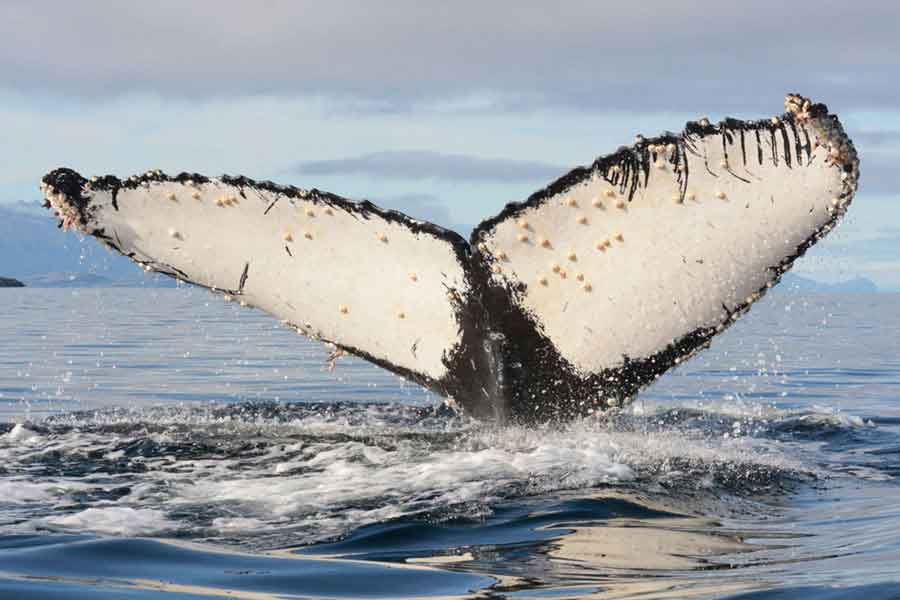
At the beginning of the 20th century, scientists studying humpback whales, concerned with obtaining data about their annual migrations, would shoot them with a kind of steel bullet with an engraved number. Years later, when the animal was killed to extract its oil, the bullet would be recovered from the cauldron where the whale’s blubber was melted.
This method informed researchers that the whale had been in at least two locations: the place where it was tagged and the place where it was hunted. During that time, only a couple thousand of these rudimentary markers were recovered.
Years later, it was discovered that the underside of the humpback’s tail had shades of white, black, and gray with different patterns that were never the same. The edge of the tail also had several small cuts. By combining these two characteristics, a specific individual could be identified since no two tails were alike. Gradually, a photo archive of whale tails from different parts of the world began to take shape. Researchers, enthusiasts, and ordinary tourists all contributed to assembling this great puzzle, which required years of effort and hard work.
By being able to identify an individual, access to previously unknown data became possible. Today, we can learn about migration routes, map the places a whale has visited in the past year, know its offspring, how many offspring it has had throughout its life, its age, the range of ages during which it reproduced, and the duration of its reproductive period, among other details. Once an animal is identified, it is given a name, and the story of its existence begins to be written. In the pursuit of knowledge, there are individuals that have been photographed over two thousand times in different parts of the planet.
The Japanese whaling fleet in the ’60s and ’70s, when hunting was permitted, had a very particular view on how to «contribute to science.» Every time they killed a whale, they would take photos of its tail and send them to environmental organizations to have them removed from their records. After the bans and the establishment of maximum catch quotas, these photos stopped arriving.
It is incredibly little that we know about whales, the largest animals on the planet, because we first focused on killing them and then tried to understand them. It is so easy to save them from extinction that it is frightening to think that we are not truly trying. There are only three countries that insist on killing them, and a whole world that opposes them in vain. Their salvation is so simple that if we cannot save the whales, there is nothing else that we can save.
I imagine a world without whales. I imagine a sea devoid of leaps and emerging tails, empty of songs and calves. I imagine a world of men saddened by absences. Because when the whales are no longer here, inexplicably, we will be left alone facing a sea empty of playfulness, surrounded by thousands of photographs of what could have been but never was.
«One cannot defend what one does not love, and one cannot love what one does not know.»

